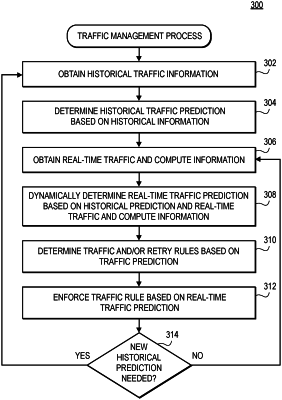| CPC H04L 47/2408 (2013.01) [H04L 41/147 (2013.01); H04L 41/16 (2013.01); H04L 47/10 (2013.01)] | 17 Claims |

|
1. A computer-implemented method, comprising:
obtaining historical traffic information associated with a plurality of services that form an application implemented using a microservices architecture employing the plurality of services, wherein the plurality of services includes a first service of the plurality of services that is dependent on an upstream second service of the plurality of services;
determining, based at least in part on the historical traffic information, a historical traffic prediction for a period of time for the plurality of services;
obtaining, by a software defined network (SDN) controller, real-time traffic information associated with the plurality of services;
obtaining, by the SDN controller, real-time computing information associated with the plurality of services;
determining, using a trained machine learning model and based at least in part on the historical traffic prediction, the real-time traffic information, and the real-time computing information, a real-time traffic prediction associated with the plurality of services;
generating a plurality of traffic rules specifying a transactions per second (TPS) for at least a portion of the plurality of services based at least in part on the real-time traffic prediction, wherein the plurality of traffic rules includes a first traffic rule specifying a first TPS associated with the upstream second service; and
enforcing the plurality of traffic rules for the plurality of services, wherein enforcing the first traffic rule includes controlling traffic from the first service to the upstream second service in accordance with the first traffic rule.
|